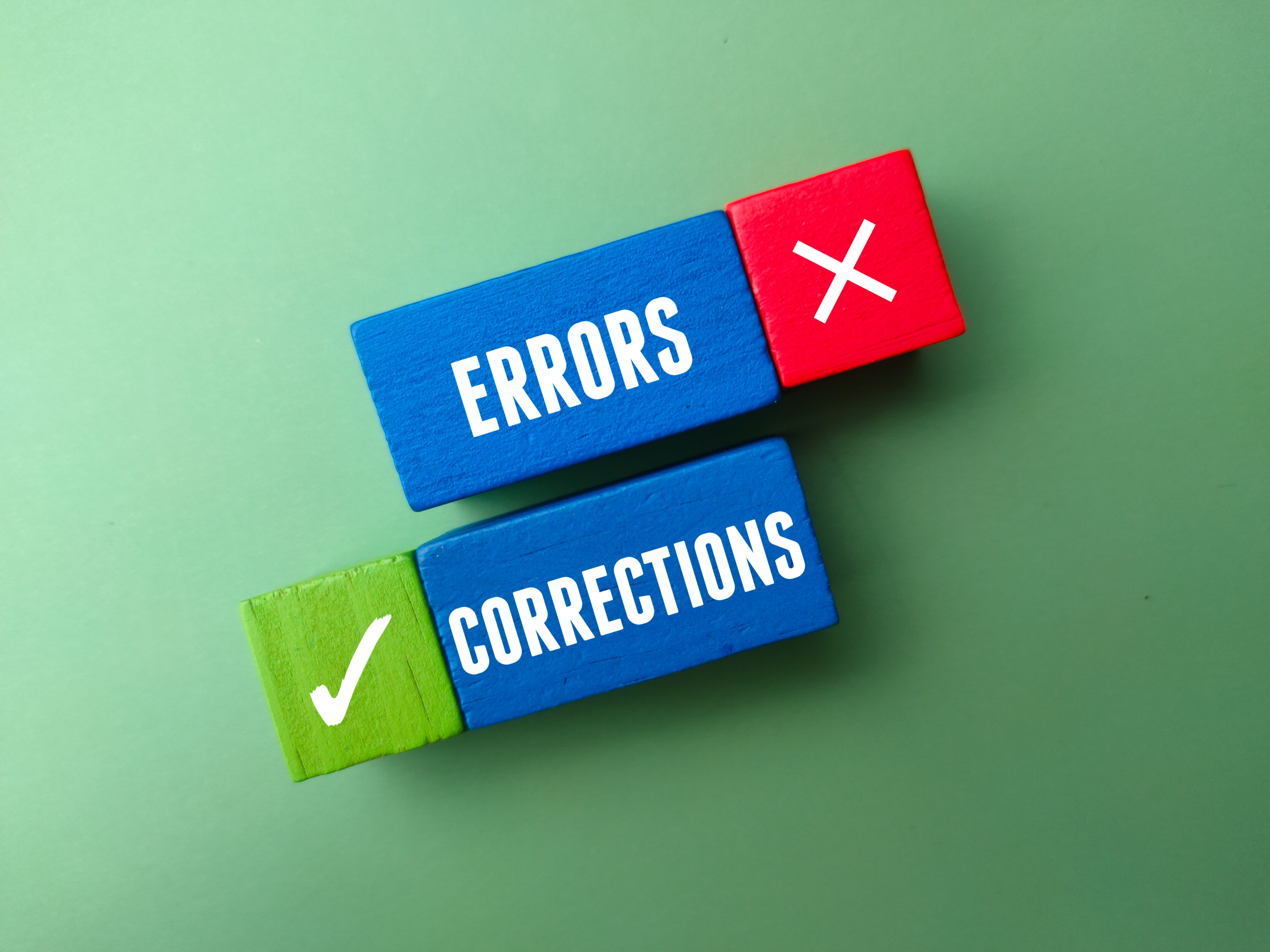Corrective Action and Preventive Action – What’s the Difference?
Corrective action and preventive action are two important quality system elements. People however often don’t know which type they should use and when. Both of these elements are part of the non conformance process and our non-conformance software contain them.
Get more information on what a non conformance is and how you can minimize them..
Let’s look at corrective action vs preventative action in some detail and try to give you some clarity.
What is Corrective Action?
The corrective action process (CA) in a QMS is the steps you should take to remove the cause of nonconformity. To take corrective action means you must react to a problem in the process and take actions to control it. Organizations often capture these steps in a Correction Action Report (CAR)
You then plan and implement the actions required to prevent it from happening again. Prior ISO 9001 versions described the difference between corrective and preventative action as corrective action preventing recurrence of an issue. On the other hand, preventative action (PA) prevents the occurrence of the issue.
Correction vs Corrective Action
A correction and corrective action is not the same thing.
A correction is something you do immediately to fix a problem. If equipment fails, you will take the steps required to get it running again. If the company sent the wrong product to a customer, you would exchange it for the correct product.
CA to prevent equipment failing could include doing regular, scheduled inspections or maintenance. These could help identify components that are close to failing, but haven’t failed yet. Replacing those components would prevent the equipment from breaking down.
CA to prevent the company from sending the wrong product to customers could include a checklist. Staff would need to follow the checklist before sending a product to customers.
From this description of correction vs corrective action, you can see that one is an immediate fix. The other prevents the problem from happening again.
What is Preventative Action?
Preventative action (PA) in a QMS is the steps you take once you have identified risk. You then take steps to rectify the cause of a problem before it happens. This eliminates the cause of a potential nonconformity in a process, thereby preventing issues from occurring in the future. You take PA if you:
- Identify a potential problem that may happen.
- Evaluate what might cause the problem.
- Take action to prevent the problem from happening before it does.
Examples of Preventive and Corrective Action
In summary: CA is the steps you take to fix the cause of an issue after it happened. With PA you notice the problem before it happens and take steps to fix the cause of the problem. Here is a simple example of corrective and preventative actions (CAPA):
- Corrective action: An electric drill shocks me when I use it. I find it is due to a frayed cord . I take action and replace the cord so that it does not shock anybody else. As part of this I implement a procedure to inspect the drill’s cord before using and fitting a new cord. I also train staff to use the procedure so that a drill does not shock anybody else.
- Preventative action: I realize a frayed cord on any power tool could shock someone. It has however not yet done so yet. I take action to prevent others from using power tools with frayed cords.
This example uses a problem with product usage, whereas CAPA in a QMS most often deals with process problems. The example however makes it easy to understand the difference between CA and PA. The process is however equally effective to identify and solve product and quality problems. In short: CAs are reactive to an actual problem after it has happened. PAs are proactive to a potential problem before it has happened. Corrective action systems typically contain fields for both types of action.
Why Recent ISO Quality Management System Standards Include Corrective Action but Not Preventative Action
Older versions of among others ISO 14001, ISO 9001, ISO 27001, had requirements for processes for CAs and PAs. These two processes were part of the non conformance reporting in the quality management system.
Although the steps you need to take for both are the same, the action that triggers a process is different. When you react to a problem that has happened, you trigger a CA.
You trigger the PA process when you identify a potential problem. This often confused people as they did not know when to use a CA or a PA. They rarely used the PA process due to it being a complex process that takes time. They would rather use this time to react via CAs.
Others saw all actions taken to prevent a recurrence during the CA process as being PA.
What Do the Most Recent ISO Releases Say Regarding Preventive Action?
The most recent release of some of the quality management system standards therefore no longer requires PA. This has removed the confusion mentioned and ISO now indicates that companies no longer need the complex process.
When used correctly, there are other parts of the standard that are effective in providing good PAs. Other sections in the standard have therefore replaced PA, including:
Continual Improvement
Any activities that you take to improve your quality management system’s processes are PAs. The focus of the new standards’ requirements is on each company finding ways to improve processes continually. This replaces the complex PA system required by the standards’ previous versions. Having something as simple as a suggestion system in place will help you to identify how you can improve processes. If you then implement those suggestions, the actions can prevent problems.
Risk-based thinking
New standard versions specify that you should identify areas where you are not sure if it will affect the QMS. Risk-based thinking and risk analysis means you should identify any uncertainties or risks. You then determine if you should take action to use positive outcomes or to prevent bad outcomes. Companies often include this when doing management reviews.
Corrective Action And Preventive Action (CAPA) – How to Do Them

The newer ISO quality management system standards haven’t really changed the systematic process used for CAPA corrective and preventive action. Corrective actions aim to improve the performance of the process or individual’s behaviors via the nonconformity reporting process.
You can easily document the steps you take by using corrective action tracking software. When you do so, remember our description of corrective action vs correction given above.
You generally need to:
1 Identify the problem
Define the actual problem. You first need to make sure the problem is not a perceived problem but an actual problem. A good way to test this is to write the problem together with a requirement to compare it. People often refer to this as a “Should Be” and “Is” statement. An example is that a supplier should manufacture components from metal, but they use plastic instead. If you are not able to specify what the outcome should be, you may not have identified an actual problem.
2 Identify the size of the problem
You need to understand how big the problem is. Did the issue only affect today’s deliveries, or did it also affect previous deliveries? Is it a single product, or multiple products? Make sure you know exactly what the scope of the problem is, and equally important, what it’s not. It may for example be important to know that the problem only occurs on Fridays.
3 Take action to eliminate the problem
How can you stop the problem from happening again while you’re looking for the root cause? Apply a correction that will stop the problem immediately while looking for the ultimate cause and resolving that. You need to identify immediate measures and implement those to catch the problem if it recurs while fixing the cause.
4 Identify the problem’s root cause
Don’t only look at the surface manifestation of the problem but find out what is at its base. This part can be very tricky. How do you know that you have in fact found the underlying cause? There are many ways you can tackle this. These range from more difficult methods like the classic Fishbone Diagrams to the ‘5 whys root cause analysis.’ In the latter, you ask “Why” 5 times until you identify the root cause. After completing this step, it’s always good to ensure that the scope hasn’t changed and grown, requiring further containment steps.
5 Devise a plan to address the root cause
What do you have to do to eliminate the root cause that you have identified? Decide on the steps that you need to take to eliminate the problem’s root cause. You may need to first identify the return on investment and the cost of the fix, depending on the problem. If the fix is expensive and complicated, how will the company fund it and who has to approve the funds?
6 Put the plan in place
Implementing corrective actions that you have planned simply means following your plan and making it happen.
This could be as simple as:
- Changing an existing or implementing a new procedure or process
- Buying new equipment as the existing one can no longer deliver as per your requirements.
7 Check that the plan is effective
You need to make sure the plan you implemented was effective. After implementation, simply wait an appropriate amount of time and then check that the problem hasn’t recurred. If it does, the first thing to check is if you’ve identified the actual root cause. Although this step is the most important one, most companies have trouble with it.
People tend to close out paperwork as soon as possible or believe the quality management systems registrar needs early closure. It is however essential that you do proper follow-up. You may want to combine this with internal audits or a management review.
Find out how to Create a highly effective Corrective Action plan.
Final Words
Most organizations will have implemented a form for corrective actions as part of their quality records that include these steps. This will help you keep track of the information and make sure you don’t forget any steps. They often do this as part of their NCRs and use corrective and preventive action software to simplify the process. People also refer to this as a CAPA system.
It is important to have a good systematic process that will help you detect recurring quality problems. You can then find and fix the root of the problem for any systemic issues within your company. If you only address the symptoms, you can be sure the problem will return. This will be undesirable as it will adversely affect your quality system.
The aim of corrective actions is to identify and address the root cause of the problem to prevent recurrence. If you achieve that, you’ve improved your process and your preventive and corrective action process is effective.



